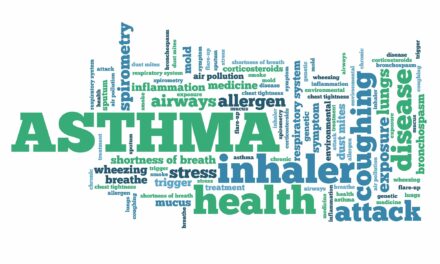College dining halls lack ingredient labels and emergency epinephrine, leading to higher risk of food allergy exacerbations and anaphylaxis.
RT’s Three Key Takeaways
- Limited Ingredient Labeling – Only 16% of large universities (15,000+ students) labeled all ingredients in their dining halls, while 42% of all schools lacked any ingredient labeling.
- Inadequate Epinephrine Availability – Fewer than 10% of large schools stocked undesignated epinephrine autoinjectors (EAI) in dining halls. Over 95% of dining halls and two-thirds of emergency responders lacked immediate access to epinephrine.
- Food Allergy-Friendly Stations Are Common – 76% of schools had dedicated allergy-friendly stations, but without proper labeling and epinephrine availability, the risk of accidental exposure remains high.
Many colleges lack food allergy labeling and epinephrine autoinjectors needed to prevent food allergy emergencies, according to research presented at the 2025 AAAAI / WAO Joint Congress.
“While the general literature surrounding food allergies on college campuses is limited, data analyzing adolescent risk-taking behavior and low rates of EAI carriage suggest that university dining halls can be a high-risk environment. For many students, college is their first introduction to managing meals without family support. As food-allergic students learn to become their own advocate, it is imperative to have reliable systems in place to prevent and address allergic reactions on campus,” says lead author Preena S. Shroff, student researcher at Northwestern University.
In this study, 217 verified schools on the FARE College Search site were investigated for various measures of food allergy accommodation in dining halls during the summer of 2024. The presence of labeled ingredients, allergy-friendly stations and undesignated stock epinephrine were documented for small, medium and large institutions of higher education.
Of the universities with an undergraduate enrollment under 5,000 students, 10% posted full lists of ingredients in their dining halls and only 2.9% had epinephrine auto-injectors available for public use. At dining halls of institutions with 5,000 to 15,000 students, 12% posted full ingredient lists and 2.6% stocked undesignated epinephrine auto-injectors. The research found that for large schools with over 15,000 undergraduate students, 16% labeled all ingredients and 10% had epinephrine auto-injectors available at dining halls. Of the 217 schools examined, approximately 76% had food allergy-friendly stations, while 42% did not label any ingredients. Over 95% of college dining halls, and two-thirds of campus emergency responders, lack epinephrine on-hand in case of emergency.
The results found that, although many schools provide food allergy-friendly alternatives in dining halls, the lack of ingredient labeling and access to emergency epinephrine auto-injectors may result in delayed epinephrine administration, putting food-allergic students at a higher risk of anaphylaxis. By appropriately labeling allergenic foods and increasing epinephrine auto-injectors access, major improvements can be made for the health and safety of students during their college experience.









